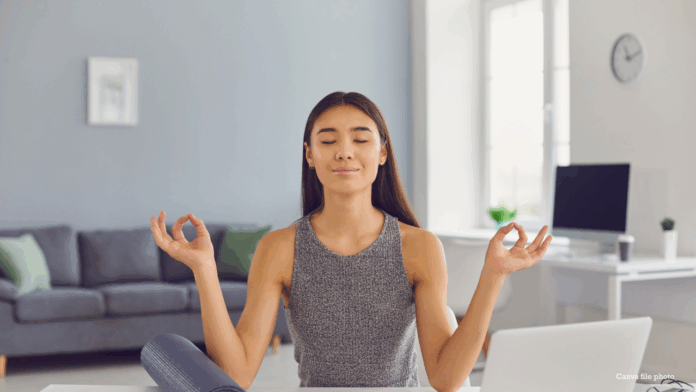Embracing moments of mindfulness provides individuals with tools to navigate life’s complexities with clarity and calmness.
Anxiety impacts millions, often showing up as feelings of persistent worry, fear, or tension. While it may be overwhelming, mindfulness can help manage these inner battles.
Mindfulness can help reduce anxiety attacks by focusing on the present and accepting anxious thoughts without judgment. This practice restores a sense of calm and control.
What is Anxiety?
Anxiety is a feeling of nervousness or worry about something that is happening now or in the future. It often arises in situations like preparing for a big presentation or job interview, attending a new school, or getting stuck in traffic on the first day of work.
Most people view anxiety negatively, but Psychology Today notes that occasional anxiety is normal and can even boost productivity. However, when anxiety becomes persistent, pervasive, or overwhelming, it can interfere with daily life at school, work, or in social settings, indicating a potential anxiety disorder.
When Does Anxiety Become a Disorder?
The American Psychiatric Association (APA) says anxiety disorders can push people to avoid situations that trigger or worsen their symptoms, harming job performance, schoolwork, and personal relationships. To be diagnosed, anxiety or fear must be disproportionate to the situation, age-inappropriate, and disrupt daily functioning.
APA’s Diagnostic and Statistical Manual of Mental Disorders (DSM-5) details that this particular mental health condition includes generalized anxiety disorder, agoraphobia (unnatural fear of certain places and situations), panic disorder, specific phobias, social anxiety disorder, separation anxiety disorder, and selective mutism.
Fighting Anxiety
Here are some mindfulness techniques to help reduce anxiety, ease tension, and calm the mind:
1. Deep Breathing: This controlled breathing technique can help steady the nervous system and lower stress levels. Do this by taking slow, deep breaths. Inhale for four counts, hold for four, and exhale for four.
2. Body Scan: This mindfulness practice involves mentally focusing on each part of the body, one at a time, to notice physical sensations, tension, or discomfort. Do this by mentally scanning from head to toe, checking for areas of tightness or discomfort. Focus on relaxing each part of your body, releasing tension as you move through.
3. Mindful Meditation: This technique helps people stay present, letting go of past and future worries to reduce stress and calm the mind. Sit quietly and focus on your breath. Let thoughts come and go without judgment, gently bringing your attention back to your breath each time it drifts.
4. Grounding Exercises: Grounding exercises restore awareness of the present by focusing on sensory experiences. These techniques redirect attention from anxiety and anchor you in the moment. Engage each of your senses:
• Identify five things you can see;
• Identify four things you can touch;
• Identify three things you can hear;
• Identify two things you can smell;
• Identify one thing you can taste.
5. Mindful Walking: This form of meditation combines walking with mindfulness. Take a slow, intentional walk, noticing each step, the feeling of your feet on the ground, and the rhythm of your breath. This practice helps you stay present and refocus on the physical experience.
Embracing moments of mindfulness provides individuals with tools to navigate life’s complexities with clarity and calmness. Engaging in these techniques helps them observe their thoughts and feelings without judgment, enabling more thoughtful responses to challenges instead of impulsive reactions.
By continuously exploring and practicing these methods, individuals can discover their lasting impact on overall quality of life.



